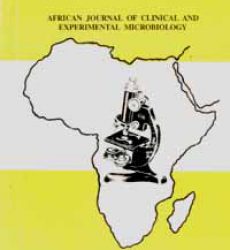Mba, Anthonia Nkiruka
International Institute for Infectious Diseases, Biosafety and Biosecurity Research, David Umahi Federal University of Health Sciences, Uburu, Ebonyi State, Nigeria
Abstract:
Background: The pervasive presence of filamentous fungi in poultry farming environments has a profound impact on the bird health, leading to reduced growth rates, increased mortality, and decreased egg production. The objective of this study was to use an avian model to determine the pathogenicity of some filamentous fungal isolates from litter, feed, and fecal samples on day-old birds.
Methodology: A total of 300 environmental samples (feed, litter, and droppings) were collected from 10 selected poultry farms in six local government areas (LGAs) in Anambra State, and cultured for fungi isolation by phenotypic (macroscopic and microscopic) and genotypic methods. Five of the fungi isolates were used for pathogenicity study on day-old chicks. A total of 25 day-old-chicks, randomly divided into 5 groups of 5 each, were orally infected with 1 ml of the different fungal conidia. A 6th group served as the control and was inoculated with the same volume of phosphate-buffered saline. All the birds were observed twice daily for appearance of clinical signs for 10 days. Histological examination of the intestinal tissues and stomach of infected birds was done. Data were analysed using one-way ANOVA on SPSS version 21.0, with p<0.05 considered significant Results: The pathogenic effects of the 5 fungi isolates (Curvularia verruculosa, Aspergillus tubingensis, Cunninghamella bertholletiae, Fusarium oxysporum and Aspergillus fumigatus) used for the pathogenicity study on the birds include symptoms such as; (i) reduction in food and water intake, fraying of feathers and loss of reflex within 5 days of exposure to C. verruculosa, and (ii) discolored and enlarged bursa of Fabricius, obstructed, dark, and slightly sloughed intestine, reduction in the sizes of livers and gizzards, and swelling of the rectum with exposure to F. oxysporum and A. fumigatus. Histological examination revealed severe destruction of the intestinal villi, distortion of the intestinal mucosa, and haemorrhage in all the groups of birds exposed to the 5 fungi isolates. Mortality in the groups of birds infected with C. verruculosa and C. bertholletiae (80.0%, 4/5) was significantly
higher (p<0.001) than in other groups.
Conclusion: This study showed that the poultry farms were highly laddened with a variety of filamentous fungi, which have a lot of detrimental effects on the health of bird and needs to be controlled through proper hygiene practices and the provision of biosecurity for the birds.
Keywords: Poultry, filamentous fungi, birds, gastrointestinal tract, pathogenicity Received
Download this Article in PDF format below

